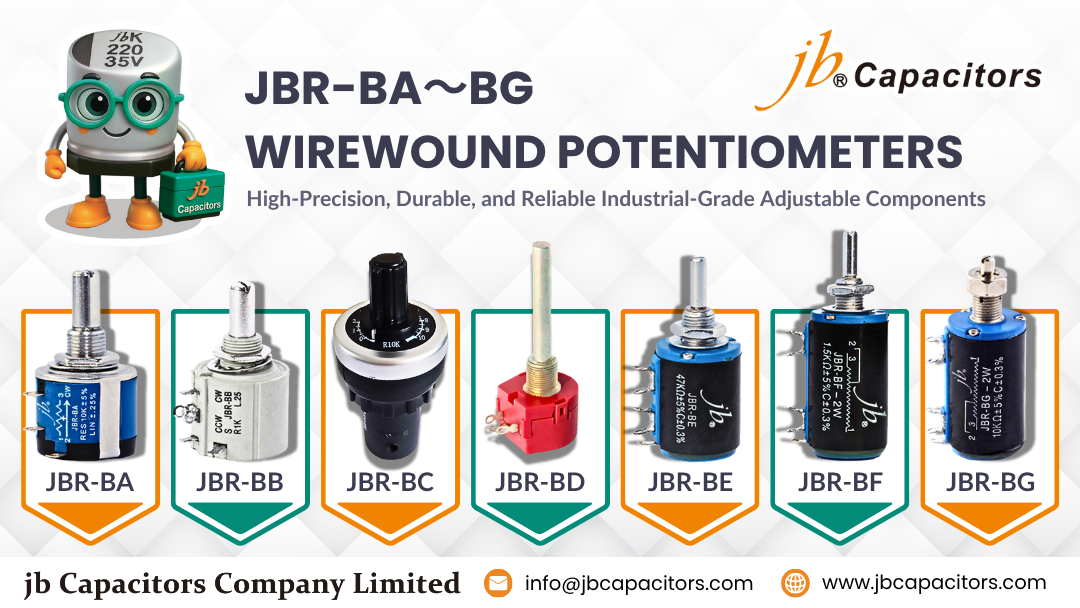RoHS high-voltage solid capacitors are becoming a core building block for compact power modules, automotive ECUs and IoT edge devices. By combining solid polymer technology, low ESR behavior and environmental compliance, they help engineers meet strict efficiency, thermal and regulatory targets in dense SMD power designs. The video above shows the internal structure of multilayer solid polymer capacitors, giving a visual reference that goes beyond a standard datasheet.
What Are RoHS High-Voltage Solid Capacitors?
RoHS high-voltage solid capacitors replace traditional liquid electrolytes with a solid conductive polymer system, while fully complying with RoHS environmental directives. This architecture eliminates classic wear-out mechanisms such as electrolyte evaporation and significantly improves ESR stability across temperature and lifetime.
In practice, this allows engineers to design smaller SMD power stages that can handle demanding load transients and elevated temperatures without sacrificing reliability or regulatory compliance.
Why They Matter in Power and Automotive Platforms
In next-generation power and automotive systems, every watt and every degree of temperature margin counts. RoHS high-voltage solid capacitors contribute in several critical areas:
- Low ESR at switching frequencies reduces I²R losses and output ripple in DC–DC converters.
- High ripple current capability supports dynamic loads in CPUs, GPUs, motor drivers and inverters.
- Stable performance over temperature is essential in under-hood and harsh industrial environments.
- RoHS compliance simplifies global deployment without redesigning the power stage for each region.
For automotive ECUs and ADAS modules, where qualification and validation cycles are long and expensive, using a solid, RoHS-compliant capacitor technology helps reduce field-return risk and overall lifecycle cost.
Benefits for IoT and Edge Power Architectures
IoT nodes and edge devices combine RF, sensing, compute and power management in extremely compact housings. RoHS high-voltage solid capacitors address several recurring design challenges:
- Space constraints: SMD packages deliver high capacitance density on multilayer PCBs.
- Battery and energy-harvesting designs: low ESR improves conversion efficiency and run time.
- Mixed-signal environments: reduced ripple and noise improve ADC, RF and sensor performance.
- Field deployment: long-term stability lowers maintenance and replacement intervals.
Key Parameters to Check When Selecting RoHS Solid Capacitors
Whether you are designing a power module, automotive controller or IoT gateway, it is important to match capacitor parameters against your specification:
- Rated voltage and derating strategy for nominal bus, transients and safety margin.
- ESR and impedance vs. frequency to align with converter switching frequency and control loop.
- Ripple current rating at the operating frequency and ambient temperature.
- Endurance rating (time, temperature, applied voltage) versus product lifetime targets.
- Package and height profile to satisfy mechanical and airflow constraints.
Typical Application Examples
RoHS high-voltage solid capacitors are widely used as key passives in:
- AC–DC and DC–DC power supplies for servers, telecom and industrial equipment
- On-board automotive power rails, body electronics and ECUs
- Inverters, motor drives and power modules in industrial automation
- IoT gateways, smart meters and connected sensor platforms
- Consumer and prosumer equipment that must meet RoHS and global compliance requirements

How to Evaluate Series Options and Plan Sourcing
Many projects combine several rails (for example 5 V, 12 V and 24 V) and require a consistent sourcing strategy. When reviewing RoHS high-voltage solid capacitor series:
- Map your rails to the available voltage ranges of each series.
- Check the capacitance range offered in the same SMD footprint to simplify PCB layout.
- Review ESR and ripple current tables against converter requirements.
- Consider using one family across multiple projects to simplify logistics and long-term supply.
Combining datasheets with internal-structure insight from the video at the top of this page helps engineers justify component choices to technical reviewers, quality teams and end customers.
Go Deeper: Product Pages, Catalogue and Direct Contact
For a broader view that includes polymer, film, aluminum and MLCC technologies, the jb capacitors full catalogue consolidates:
- Series codes and technology comparison for fast part screening
- Voltage and capacitance maps across families
- Recommended application areas for each capacitor type
Use it as a reference during architecture reviews, BOM convergence and sourcing discussions. If you need support on part selection or cross-reference, you can also contact the jb team directly.
📧 Direct engineering & sales support: info@jbcapacitors.com
Review series options, watch the internal structure video again, download the full catalogue and contact our team to discuss your next power, automotive or IoT design.









